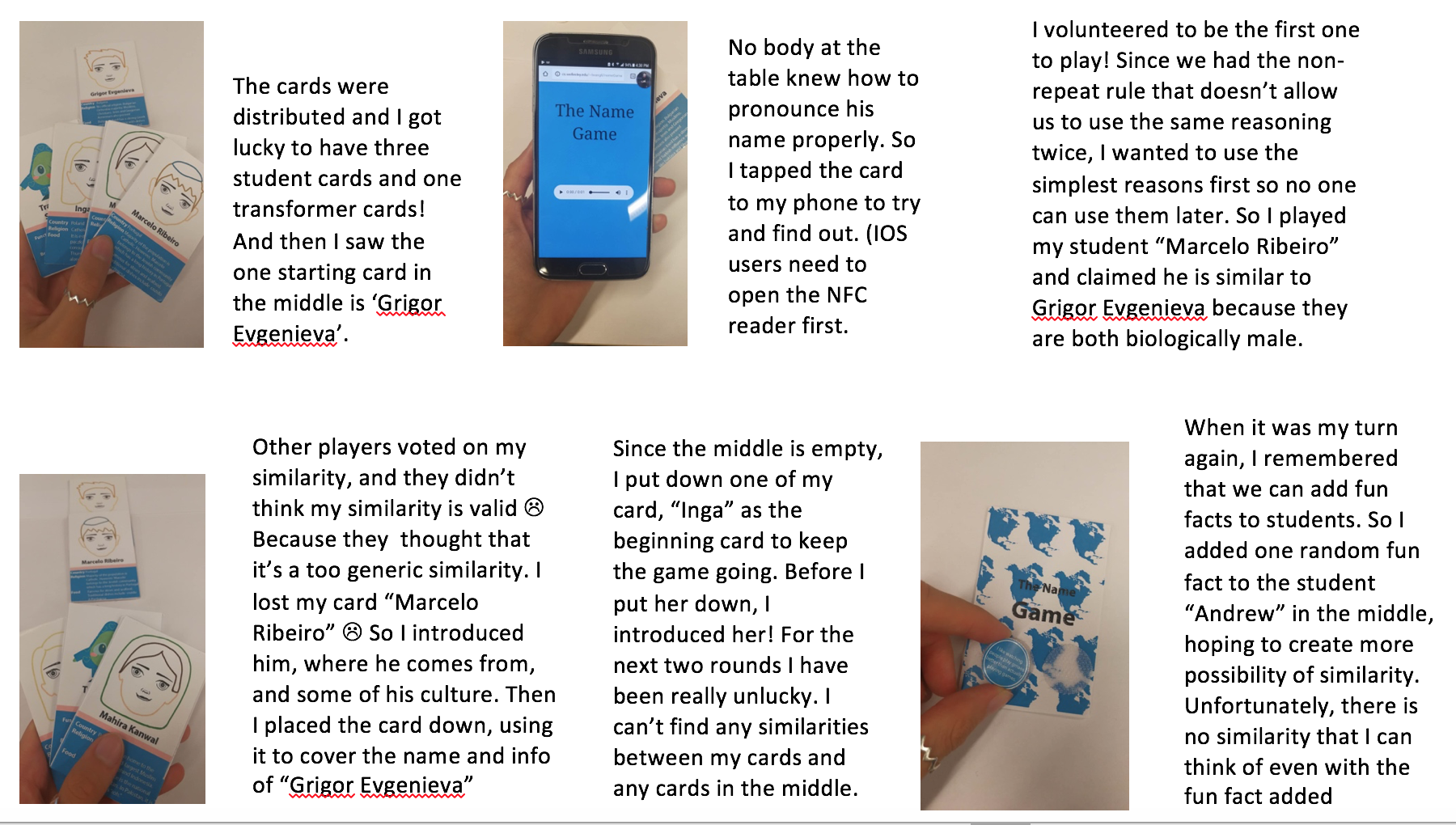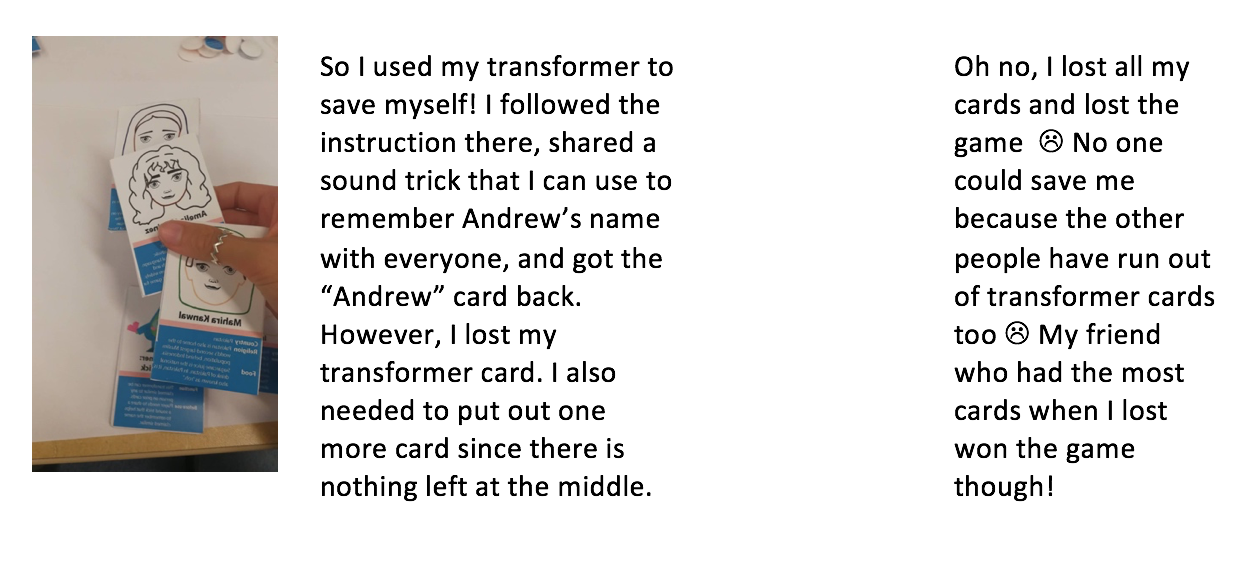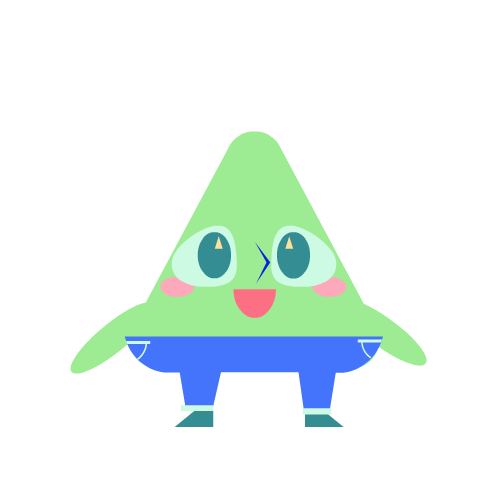 TSL Playground
The Name Game
Guess That Motivation
Feed-it
Chapter V
Belonging in Humanity
About Us
TSL Playground
The Name Game
Guess That Motivation
Feed-it
Chapter V
Belonging in Humanity
About Us
The Name Game
PLAYER: > 3
TYPE: Table top with digital help
TIME: 45 minutes
This game wants to help teacher candidates practice creating a sense of belonging for everyone student. There are three main ways that the game tries to do so. For one, being called the right name and having the same opportunity of being called no matter the student’s name is Mary or Abasiekeme is important for the students to feel belong and valued. So the game first tries to give players more exposure to some possibly less familiar names. Proper pronunciations can also be learnt during the game.
Culture-responsive pedagogy is currently a good way to promote classroom belonging in a diverse environment. The second way in which the game tries to help is to teach the players knowledge about different cultures. As a possible result, their increased knowledge about different cultures may come in handy in future classrooms to employ culture-responsive pedagogy.
For three, the Name Game imitates the “name, originality and two fun facts” mode of student self-introduction. While playing the game, teacher candidates can pretend that they just got this brand new class of pupils and practice to remember everyone in the shortest time practicing fun memory tricks.
If you are trying to win the game, your objective should be winning as many cards as possible from your co-players. As well as preventing the game to end when someone has more cards than you do.
In the middle of the game, the game field may look like the bellowed image. There are four players in the pictured game. As you can see, fun facts have been added to some cards, and player 2 is losing since they only have one card left.
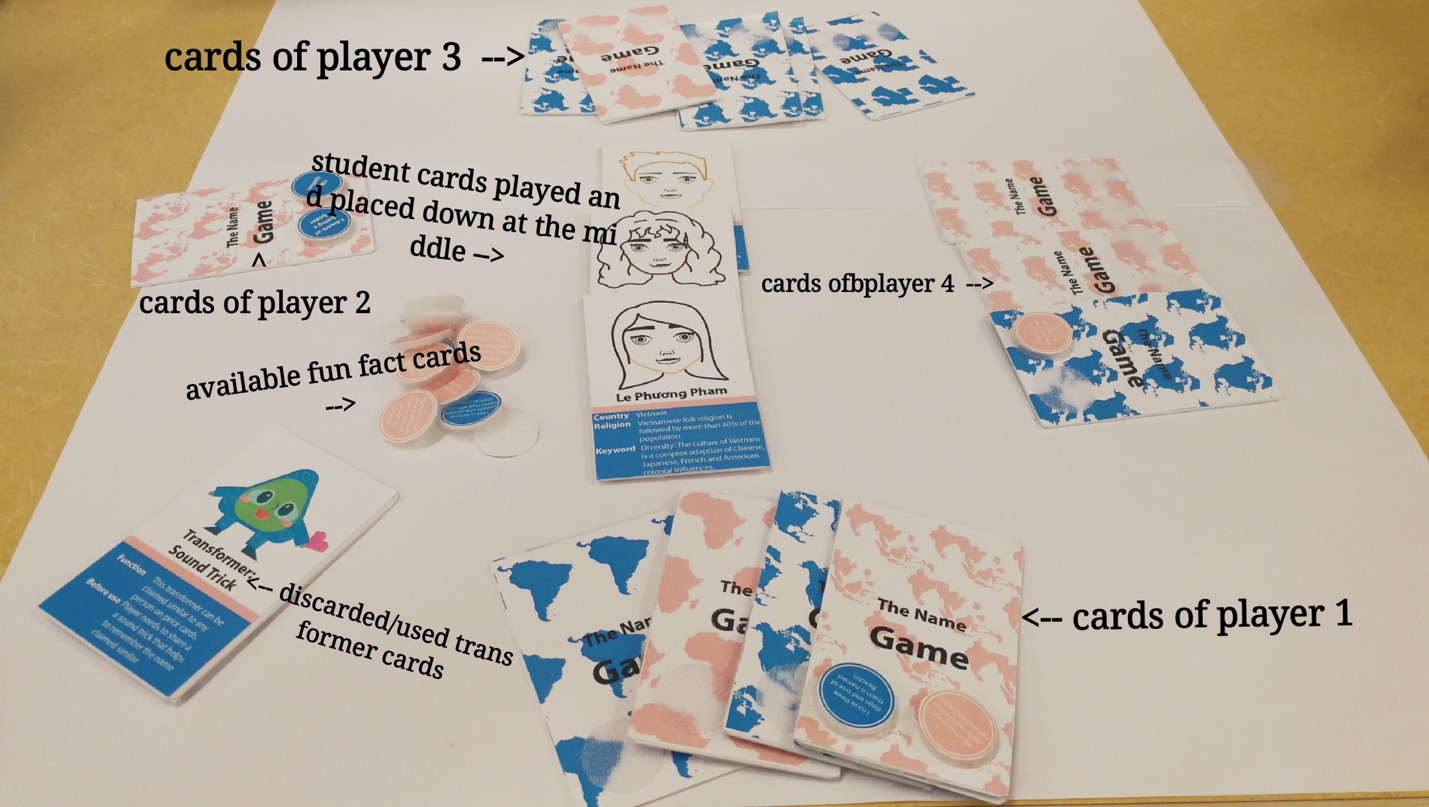
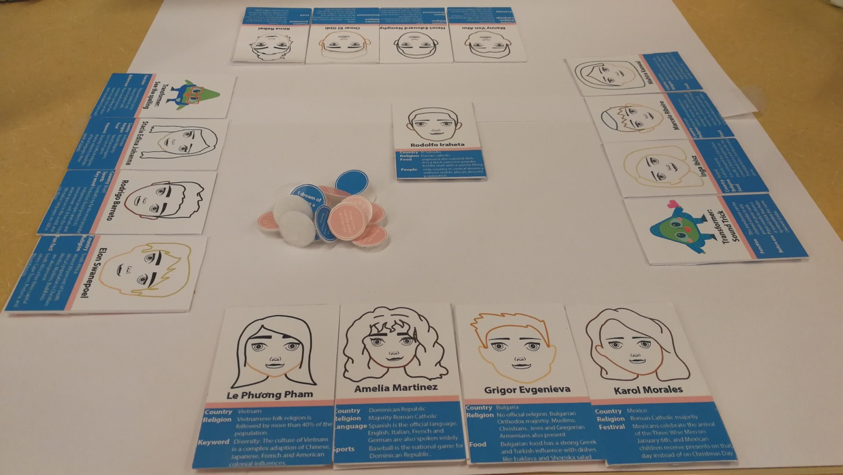


No, you can’t. Trying to remember as much as you can about a student when they are introduced is the point. So pay attention when a card is placed down. You can’t go back to review the information later.
No, if you are lucky to have one transformer card, you can use it to save yourself once only. Once it is used, it need to be discarded.
Yes! The more cards there are placed between your card and the card you want to claim similarity with, the more cards you win. So if you think you have a card similar to the very first one on the table, try to claim it!
No, you can’t. You have to wait until it’s your turn to claim similarity!
No, you can’t. You only have 30 seconds to decide which card to play when it is your turn.
The colors used at the back of every card has no meaning. The colors are different because of pure aesthetic variety. The maps on the back though signifies the region that the student comes from.
Of course! Getting rid of the ‘non-repeat’ rule will make the game much simpler. However, you can also try to make the rules stricter. For example, come up with a list of reasons that can’t be used. Or limit the reasons to only be about geography/ personal fun facts.
